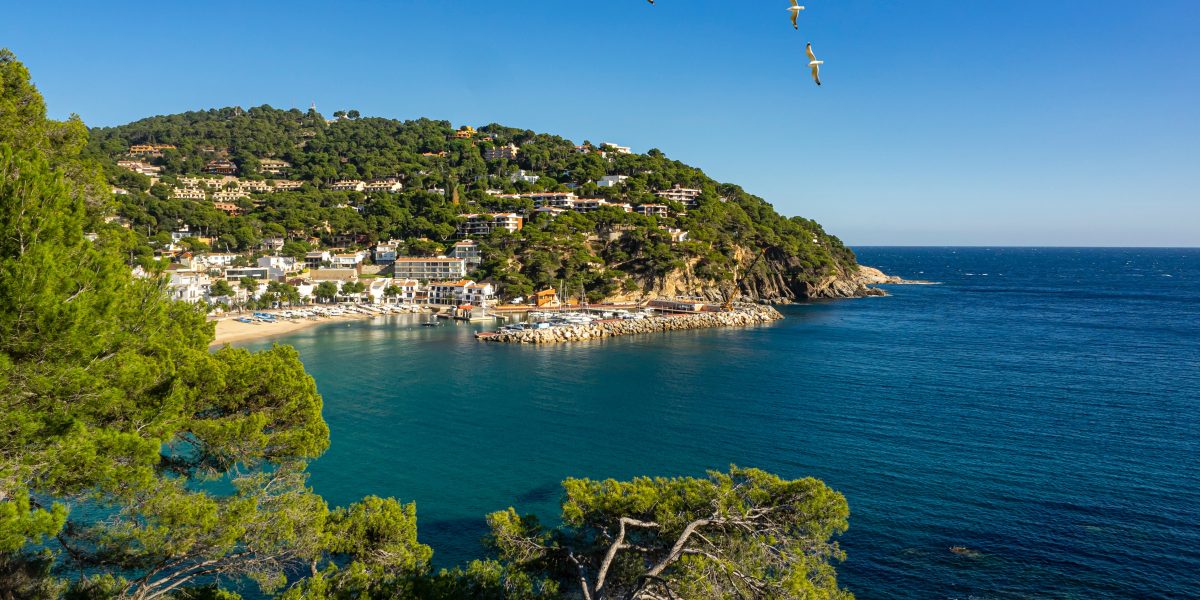CREDA
It’s obviously not the same to live on the plain than in the mountains, nor on the coast than the interior. But what is not so obvious is knowing exactly what activities are carried out thanks to the region’s geography and, even less, knowing how they evolve over time and affect the development (sustainable or not) and the global economy.
To have a better understanding of the coastal area of Catalonia and its activities linked to the sea, we spoke with Martín Federico Alba, researcher at the Center for Agro-Food Economics and Development (CREDA) and specialist in blue economy, meaning all economic activities that are related to the sea.
Dr Alba explains that in 2018 in Catalonia there was a context that prompted a pioneering project to measure the Catalan activities related to the sea. On the one hand, at that time the Catalan maritime strategy was approved and one of its goals was to find out the economic weight of the activities in this sector. In addition, at the European level, a new methodology had been designed to measure the economy of the sea, and the Blue Economy Report had been published with the first data of each European Union member state.
CATALONIA: A PIONEERING CASE
Despite these circumstances, which were so conducive to add knowledge about the blue economy, there was a lack of information at the regional level. In fact, “at that time there wasn’t any estimation of the Catalan sectors linked to the sea” explains Alba, noting that, moreover, in general economic studies, this sector is not defined in detail. “Only some very obvious activities are taken into account, such as fishing, while many others, such as shipbuilding, are overlooked.”
In this context, CREDA began a study to measure the blue economy of Catalonia and provide, for the first time, specific knowledge on this subject. The question is, how did they do it?
APPLYING THE EUROPEAN METHODOLOGY: A COMPLEX PROCESS
Alba explains that “usually the sector statistics are done by the classification of economic activities in the European Community, abbreviated as NACE. These codes allow international comparisons, ensuring that the figures from the different countries use the same criteria and, therefore, refer to the same sectors”.
In this case, the CREDA team used the methodology proposed by the Blue Economy Report of the European Union, which establishes a specific list of sectors that are related to the sea. This is a completely necessary step to start the study, “because if we don’t delimit clearly what is the blue economy and what is not, we could be counting two activities as if they were one”, according to the blue economy specialist.
Once CREDA researchers knew which sectors they needed to gauge (for example; living marine resources, port activities, maritime transport, etc.) they realized that public information sources —in other words, the information that anyone can consult from the ministry publications or economic and social development organizations— didn’t provide the necessary level of detail required by the European guide. There were no specific data, for example, on maritime tourism, which is tourism that takes place at a certain distance from the sea. Alba explains that “to fill this information gap, we started a collaboration with the Acció Climàtica, Alimentació i Agenda Rural departament and with the Institut d´Estadística de Catalunya (IDESCAT)”.
Thus, the lack of public information forced CREDA not only to measure the economy of the sea sector, but also to become a generator of novel statistics.
SOME REVEALING DATA
The research bore fruit, and they obtained the sought volume data for each sector, subsector and specific activity, with detail of, for example, “Interurban passenger transport by rail, which is an activity that is part of the Transport subsector and the Maritime Tourism sector”, totalling a turnover of €14,418.8 million and an occupation of 168,400 people.
With this information from all the sectors that make up the blue economy, the CREDA team was able to apply the European Commission’s methodology at the Catalan regional level. CREDA estimated the first numbers around 2019 and with those results they already achieved a great milestone: the Catalan case was published by the Blue Economy Report as a paragon of a regional sample. “That our referents published our data was very relevant, a big success,” highlights Dr Alba.
Since those first results, CREDA has continued specifying and expanding the information to more sectors and variables, as well as improving the methodology to broaden knowledge of the blue economy. Some of the results show that the economic sectors linked to the sea in Catalonia represent a 3.2% of the total Gross Value Added (GVA), which is the added value generated by the producers. In addition, in terms of business volume, the maritime sectors account for 5.4% of the total Catalan production. These sectors generate direct jobs that represent a 5.5% of the total employed people in Catalonia.
If we compare these data with the European averages, we realize their relevance. For example, in Italy the participation of the blue economy sectors is 1.5% of GVA and in France and Germany it is 1% of GVA. And the global results show that Catalonia is the seventh economy with the greatest maritime weight in the entire EU, just below Estonia and Denmark.
THE EFFECTS OF THE STUDY
Knowing the relevance of the activities related to the sea for the global economy may have social and political implications that affect the whole society. Studies such as this one are used to decide whether it is necessary to promote, slow down or change the strategy direction of the sea-related activities and design specific political measures for them.
The results of the blue economy measurement offer us the possibility of knowing if the evolution of the aforementioned activities is sustainable and, therefore, of thinking which are the actions we should take to have a resilient and environmentally respectful sector.


